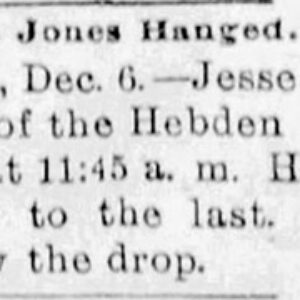 Jesse Jones Execution Story
Jesse Jones Execution Story
Time Period: Post-Reconstruction through the Gilded Age (1875 - 1900)
 Jesse Jones Execution Story
Jesse Jones Execution Story
 Wiley Jones with Horse
Wiley Jones with Horse
Jones, Wiley
aka: Walter Jones
 Wiley Jones
Wiley Jones
 Wiley Jones's Streetcar Stables
Wiley Jones's Streetcar Stables
 Jonesboro Lynching Article
Jonesboro Lynching Article
Jonesboro Lynching of 1881
aka: Greensboro Lynching of 1881
 Bob Jordan Lynching Article
Bob Jordan Lynching Article
Jordan, Bob (Lynching of)
Judson University
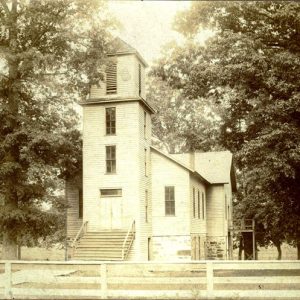 Judson University
Judson University
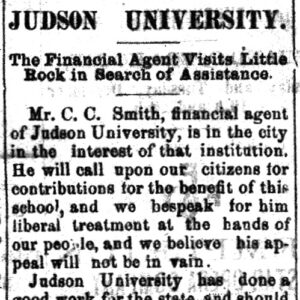 Judson University Assistance Story
Judson University Assistance Story
 Judsonia Army Band Performance
Judsonia Army Band Performance
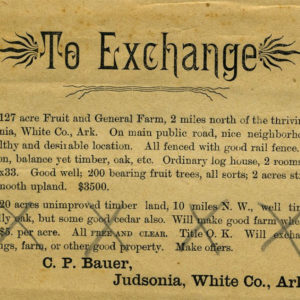 Judsonia Farm Ad
Judsonia Farm Ad
 Judsonia Street Scene
Judsonia Street Scene
Junction Bridge
Juneteenth
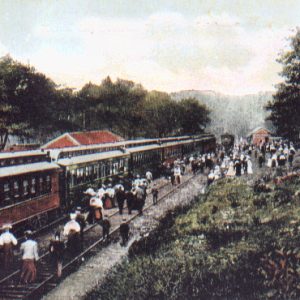 Kansas City Southern Railway
Kansas City Southern Railway
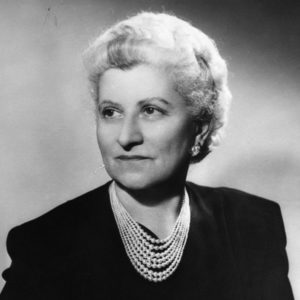 Regina Kaplan
Regina Kaplan
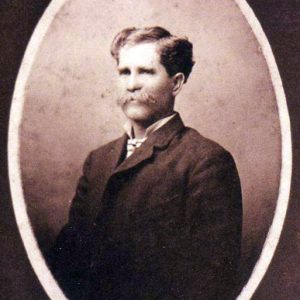 Marcus Kelly
Marcus Kelly
 Kemp Execution Story
Kemp Execution Story
Kemp, Joseph (Execution of)
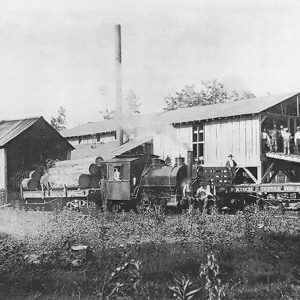 Kiech Sawmill
Kiech Sawmill
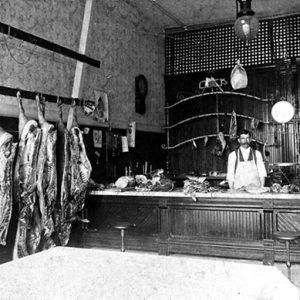 Kindervater's Butcher Shop
Kindervater's Butcher Shop
 Frank King Lynching Article
Frank King Lynching Article
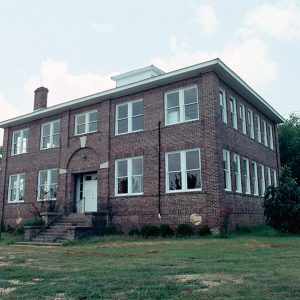 King Schoolhouse
King Schoolhouse
King, Frank (Lynching of)
Kirkendall, Mose (Lynching of)
Kirkland, John (Lynching of)
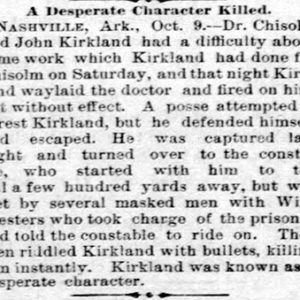 John Kirkland Lynching Story
John Kirkland Lynching Story
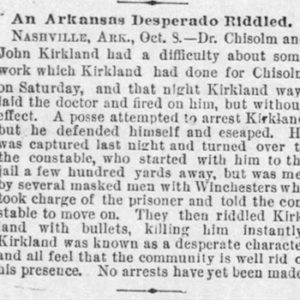 John Kirkland Lynching Story
John Kirkland Lynching Story
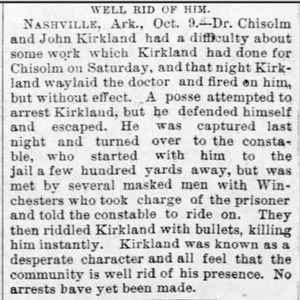 John Kirkland Lynching Story
John Kirkland Lynching Story
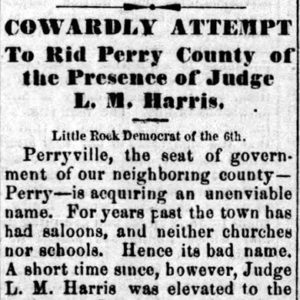 KKK Threats
KKK Threats
Knights of Labor
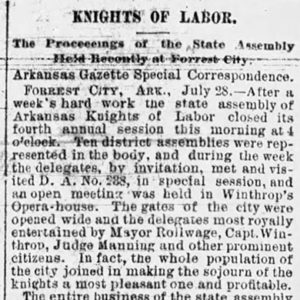 Knights of Labor Story
Knights of Labor Story
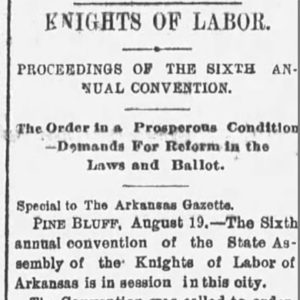 Knights of Labor Story
Knights of Labor Story
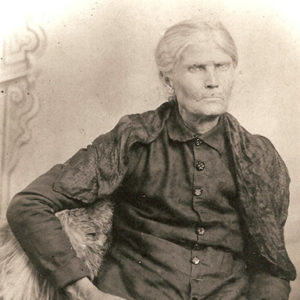 Volumnia LaBass
Volumnia LaBass
LaCrosse Collegiate Institute
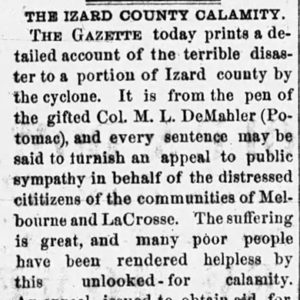 LaCrosse Tornado Article
LaCrosse Tornado Article
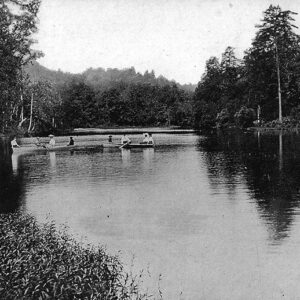 Lake Lucerne as Sanitarium Lake
Lake Lucerne as Sanitarium Lake
 Lake Nixon
Lake Nixon
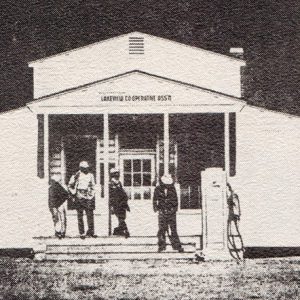 Lakeview Cooperative Association
Lakeview Cooperative Association
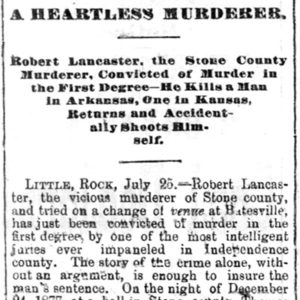 Lancaster Execution Story
Lancaster Execution Story
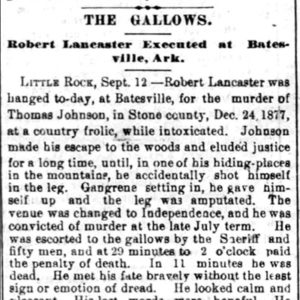 Lancaster Execution Story
Lancaster Execution Story
Lancaster, Robert (Execution of)
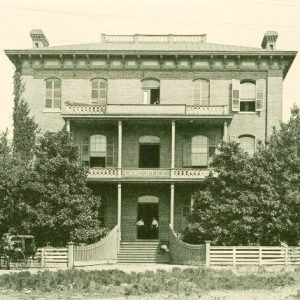 Land Office
Land Office
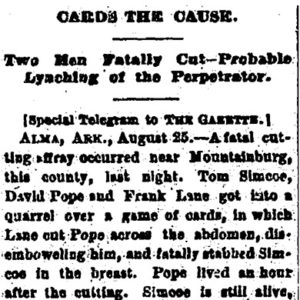 Frank Lane Lynching Article
Frank Lane Lynching Article
Lane, Frank (Lynching of)
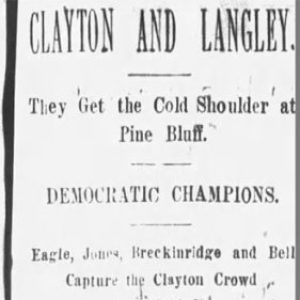 Langley and Clayton Campaign
Langley and Clayton Campaign




